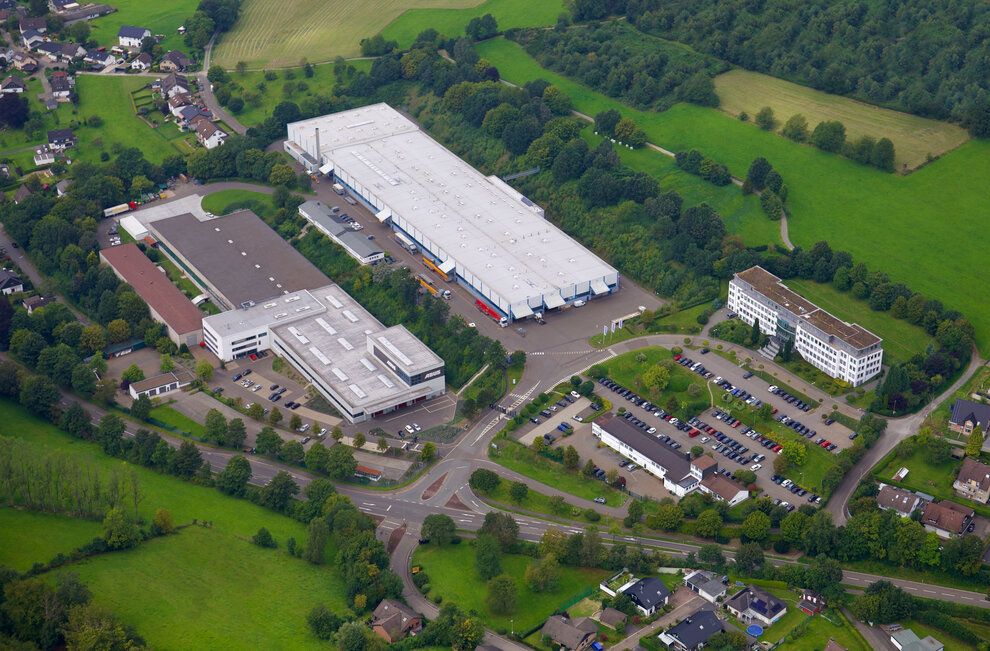Production of Overhead Travelling Cranes and Components
The ABUS founding and main location is in Gummersbach-Lantenbach.
This is where our single-girder overhead travelling cranes are welded, painted and fully assembled. In addition, our product development has been located at this site since 2022, where ideas and innovations are developed that make our cranes higher quality and more cost-effective.
Overview of the location
The site in Gummersbach-Lantenbach was opened in 1965 with the founding of ABUS Kransysteme GmbH and the construction of the first production hall. With an initial workforce of 20, the production of the first crane installations for our customers began there. Since then, the site has been continuously expanded to meet growing demand. In 1997, a 11,000 m² building was constructed for the production of overhead travelling cranes, and in 2007, an administration building and an additional area in Gummersbach-Herreshagen were acquired. All light-duty overhead travelling cranes are now manufactured at the Lantenbach site. The development centre opened in 2022 is driving forward product development.
The Production of Light-duty Overhead Travelling Cranes
The production of light overhead travelling cranes in Gummersbach-Lantenbach focuses on the manufacturing of crane installations with spans of up to 28 m and load capacities of up to 16 t. We combine high quality with flexible automation to meet customer requirements. Our modern manufacturing processes ensure precision and individual solutions for a range of applications.
The manufacturing process involves several steps, from the receipt of the raw materials to the shipment of the end product. We distinguish between overhead cranes with welded box girders and those with rolled profile girders, depending on the load capacity and span. Our overhead cranes are manufactured with the appropriate variant depending on the customer requirements and the selected crane type.
To ensure that quality, reliability and precision are guaranteed in every detail, regardless of size and strength, our overhead travelling cranes are custom-made piece by piece from high-quality steel sheets. After delivery and careful testing of the raw material, the steel must be de-rusted and de-scaled to ensure flawless welding and painting quality. Our blasting system with four high-performance turbines performs this task and prepares rolled profile beams or flat steel plates for further processing. If the crane is made from flat steel to form a box girder, more complex welding work follows this step. Flat steel plates are welded together in a PLC-controlled welding system, depending on the desired crane length. This butt-welding system processes plates of various thicknesses, works semi-automatically and guarantees high-quality connections thanks to the seam tracking system. The crane girders are welded using a special process that ensures the plates do not warp and the girder does not need to be straightened. Welded-on bulge stiffeners additionally secure the web plates against torsion. Baffle plates ensure optimal form stability of the overall construction.
The upper and lower flanges and the trolley tracks are also welded on by automated means. ABUS has developed a gantry welding system for this purpose that can weld up to six seams simultaneously and consistently. These steps are not required for overhead travelling cranes made of rolled profile girders; all that remains to be done is to cut them to length and prepare them for the various crane connection variants by welding on the main girder connection plates.
In the next step, the crane is connected to its components, such as the end carriages and the wire rope hoist. It is then painted in a special building that guarantees a clean and odour-free process. Finally, the crane is electrified, subjected to a function test and prepared for shipment.

